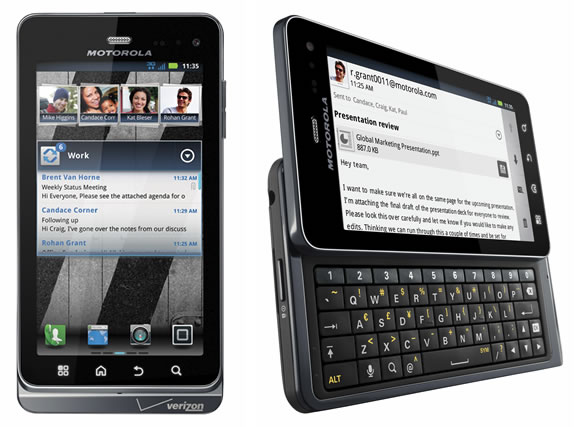I've always been a fan of the Motorola DROID and its successor devices. The original DROID was the very first Android smartphone on Verizon, and even though its keyboard was questionable, it remained one of the best devices available for quite some time. The DROID 2, however, didn't get enough of an upgrade to make it stand out from the sea of other Android smartphones.
The new Motorola DROID 3 suffers no such fate. It's got an all-new qHD resolution 4-inch touchscreen, world roaming capabilities, and a beautifully designed 5-row QWERTY keyboard. It's an office in your pocket (that weighs almost as much as some office furniture, I might add). Motorola has loaded it up with goodies like Citrix and MOTOPRINT for business users, and a dual-core processor that most everybody can appreciate.
Hardware
While the Motorola DROID 3 will be instantly identifiable as a member of the keyboard-toting DROID family to anybody familiar with the previous versions, the new device is a fair bit bigger. But with that extra bulk comes a formidable amount of power and usability.
The phone measures 124mm x 64mm x 13.5mm (4.9in x 2.5in x .5in) and weighs a back-breaking 186g (6.6oz). That's 4mm wider, 8mm taller, and about 16g heavier than the original, which was already a device you could rely upon for cracking open walnuts. The extra size and weight allowed Motorola to fit the phone with a 4-inch, qHD (540 x 960 pixel) touchscreen display and a wonderful 5-row QWERTY keyboard. From my perspective, this is the best QWERTY keyboard found on an Android smartphone today.

The body of the DROID 3 is solidly put together, and slides open and closed well - ending with an obvious click in each direction. The back of the device features a far more conventional cover than earlier DROIDs, forgoing the metal battery plate for a soft-touch coated plastic cover that snaps on and off. The front display is protected by Gorilla Glass, so it's going to be tough to break and scratch resistant.
On the left side of the device, when held in portrait mode, users will find that the familiar micro-USB port has been turned 180 degrees from the older devices, and that there is now a micro-HDMI port alongside it.
The power button and 3.5mm headphone jack are up top, and the volume control is on the right hand edge, above where one might hope to find a camera shutter button (there's none though). The 8 megapixel camera with LED flash is located on the back and an empty microSD memory card slot can be found under the rear cover.
The DROID 3 has 16GB of internal storage, so it's not a problem that the memory card slot is unoccupied and it's nice to know that you can bump up the phone's storage to 48GB by inserting a 32GB card.
